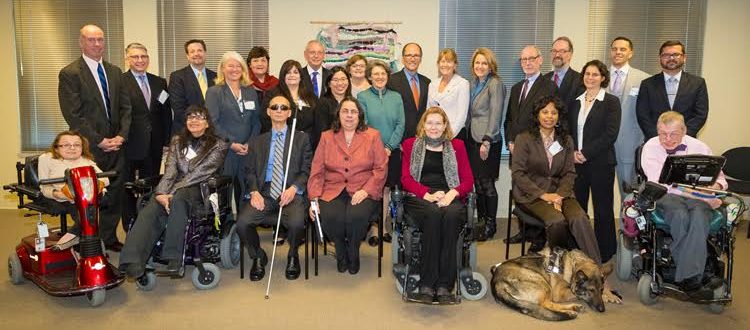The passage and implementation of the Workforce Innovation and Opportunity Act (WIOA) – specifically as it amends the IL sections of the Rehabilitation Act – brings about many changes for Statewide Independent Living Councils (SILC’s); however, most functions, responsibilities and roles of SILC’s remain stable.
The most significant changes are listed below:
- SILC’s may advocate before legislative bodies, etc.; however, lobbying per se is still disallowed as a legitimate use of Federal funds. Lobbying is distinguished from advocacy by payment for services and also by influence or solicitation toward votes.It is perfectly permissible (and allowable), for example, for SILC’s to testify as means of educating on civil rights for PWD (or on other pertinent issues), give (and fund) technical trainings and the like.Lobbying can be accomplished with other than Federal funds, though. Nonprofit (501(3)(c)) SILC’s can allocate a limited % of total funding for lobbying and maintain their nonprofit status under IRS rules/regs. Governmental SILC’s can also lobby with other than Federal funds, if allocated for that purpose.
- SILC’s can now use Federal funds for developmental (i.e. fund-raising) purposes, essentially as “seed” money. The intent is to allow SILC’s to more efficiently raise private funds and, over the long run, be less dependent upon governmental funding. SILC’s, of course, have more latitude regarding use of such private funds.
- The DSU (Designated State Unit) has been replaced by the DSE (Designated State Entity). However, the DSE still has substantial oversight over fulfillment of IL program requirements and financial management. The IL sections of WIOA/Rehab Act, as opposed to the interpretive rules/regs, appear to be more definitive in emphasizing SILC autonomy. The regs and guidance maintain the DSE oversight requirements as the fiscal “pass-through” entity. Such DSE oversight apples to both nonprofit and governmental SILC’s (with some differences between the two).There do appear to be “gray areas” in which SILC’s can appeal for autonomy. In any case, SILC’s (and CIL’s) alone are responsible for IL programmatic decisions.
- The SILC and the state CIL’s need to enter into negotiations in choosing a DSE and must designate such a DSE in the State Plan for Independent Living (SPIL).There must now exist only one DSE per state SILC. Thus, those state SILC’s which have maintained multiple DSU’s (e.g. one for blind and visually-impaired services) must decide upon only one by mid-year 2017.
- SPIL’s are developed by the state SILC’s and CIL’s, along with public input. Signatories include the SILC Chairperson, at least 51% of state CIL Directors and the DSE Director. Signature of the DSE Director does not necessarily imply control of content by the DSE; rather, that the DSE will fulfill fiscal and other responsibilities as per WIOA/amended Rehab Act.The three signatories listed above must also sign a SPIL amendment, if one is necessary and requested.
- SPIL’s must now reflect the additional IL core programmatic feature – transition services. Such services are differentiated into youth services (i.e. transition from secondary education to employment and IL) and transition from nursing homes/other institutional living. Services/programs themselves are offered by CIL’s and State agencies.
- Although SILC’s (and SRC’s) are entitled to Innovation and Expansion (I&E) funding, guidelines regarding allocation and use of such funds must follow DOE/RSA regs at the Federal level, as well as state VR guidelines. I&E funding must be listed in the SPIL resource plan.
- Considering that many/most DSE’s (as VR agencies) will need to follow DOE (as opposed to HHS/ACL/ILA) regulations, SILC’s may also need to meet these requirements; that being said, experts think that there is room for negotiations with DSE’s to allow for uniform requirements for SILC’s under HHS/ACL/ILA rules, regs and guidance (i.e. if they differ from DOE regs).
- Technical: if essentially all SILC funding is derived from Part “B” funds, cost objectives do not need to be separated. However, fund development always needs to be listed as a separate cost objective (although Federal funds can now be used for that purpose). Lobbying too must be listed as a separate cost objective (and paid for by other than Federal funds).
Throughout, SILC’s cannot by and of themselves run IL programs or services; that function is left to CIL’s and State units.
